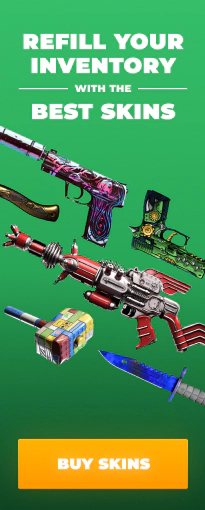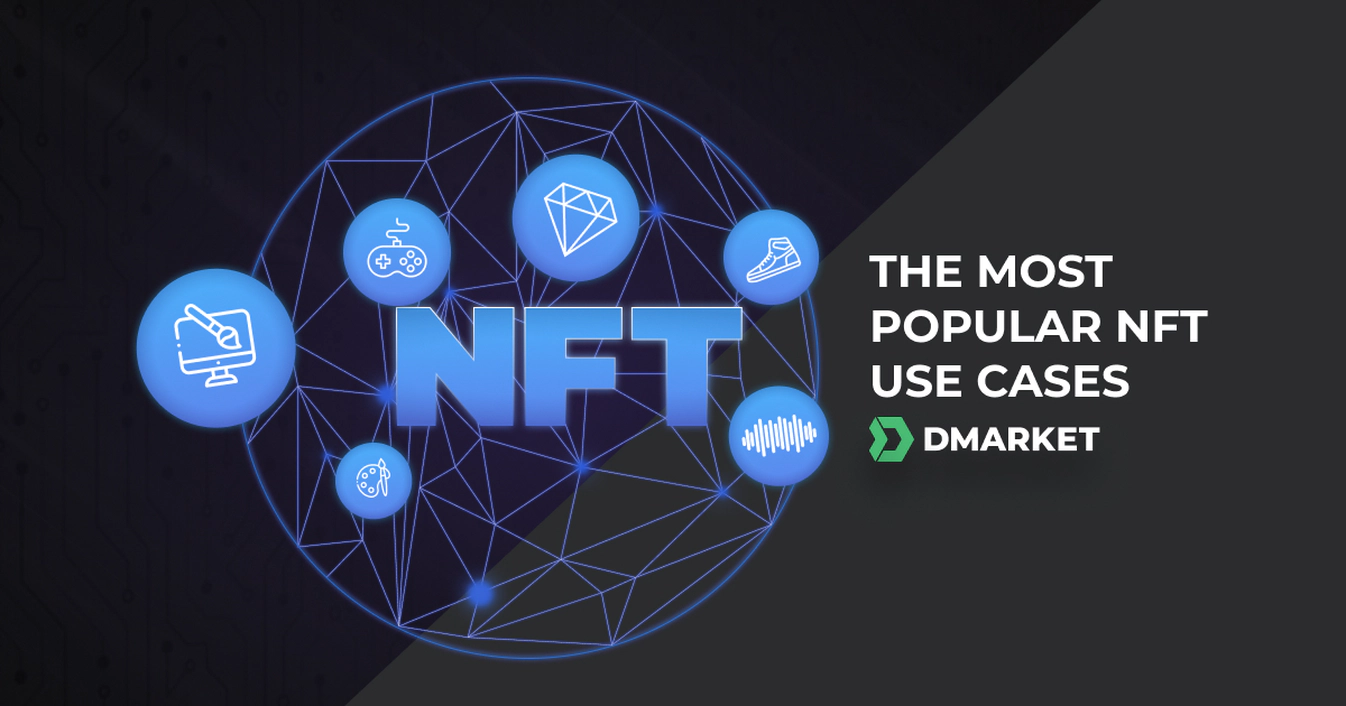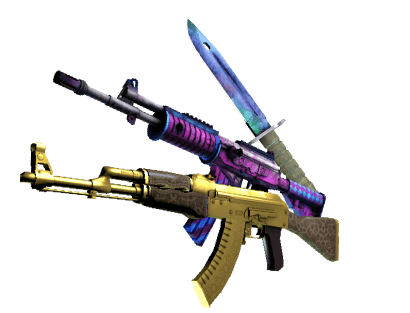The Most Popular NFT Use Cases in 2024
Non-Fungible Tokens are just a technology for keeping information in a blockchain. In general, there is a file and some metadata attached to it. The file cannot be changed thanks to the magic of decentralization. The metadata keeps info on all the previous owners and price changes for the token.
This technology is quite a tool, which can be used in different ways. In this article, we discuss the most popular NFT use cases.
What Can NFTs Be Used For?
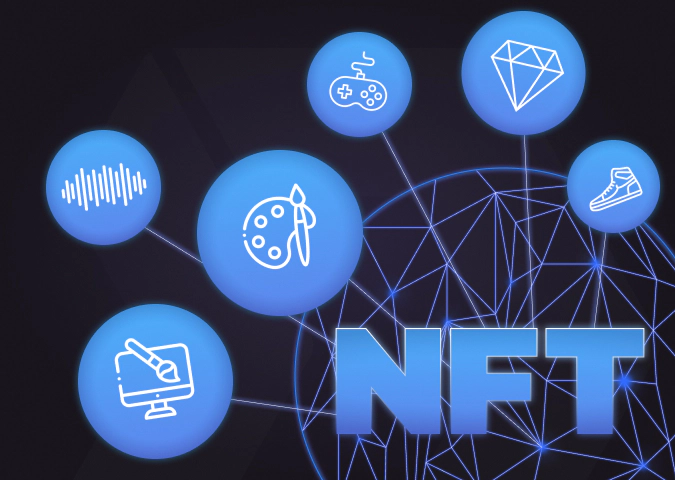
Please note that the NFT industry is still at an early stage of development, so the described use cases represent only the areas where the technology has already established itself. Non-Fungible Tokens are capable of more, and it depends on us, human beings, to enhance other businesses and aspects of our lives. Knowing practical examples might help you with NFT investing.
1. Event Tickets
Concerts, sports/esports tournaments, fashion shows, and other events offer us an entertaining time and lots of memorable emotions. But then, they are over, and as time passes, the powerful excitement might fade away. No, NFTs cannot change how our memory works, but the technology can make an event ticket more precious, and create a unique, unrepeatable connection to the past.
A strictly practical aspect of this NFT use case is the clear possibility to check the authenticity of a ticket — without any issues for the viewers and organizers.
A somewhat emotional part is having an NFT ticket to a concert of your favorite celebrity or to a match of your favorite team (with a chance to have its visual representation). A bit later, these emotions can be easily converted into real value. Historical NFT tickets link us to the event, and their potential market price becomes supported by exclusivity.
2. Luxury Goods
And talking about exclusivity… It’s the strongest area for luxury goods. Unique design and general quality should be supported by the limited edition of a luxury item. Jewelry, designer clothes, watches — these and other things totally benefit from non-fungible support of exclusivity.
Again, NFTs prove authenticity. The digital objects (certificates) carry the same information as all the other types of NFTs: the owners, sums of previous transactions, etc. In addition, the digital version of a luxury good can be as awesome as the original from the real world. What about a 3D model of your one-of-a-kind supercar?
3. Real-World Art
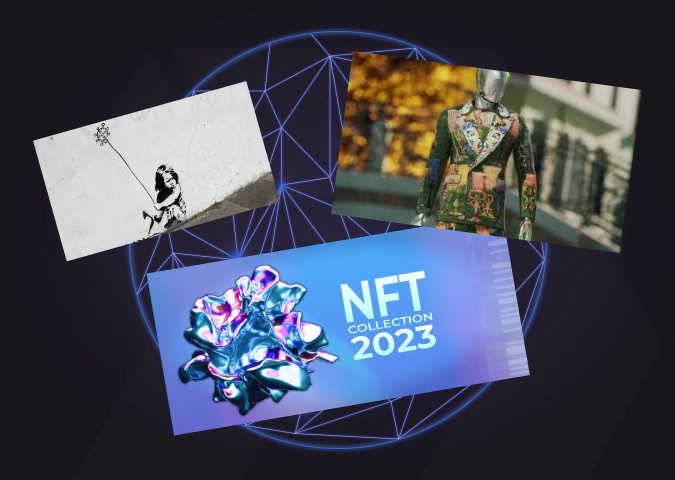
This is another NFT use case that connects the real and digital worlds. You have a painting in your hands (on your wall), and you have the same painting with attached metadata in a blockchain. Fraud protection becomes super strong with the power of NFT. No one has doubts about who the artist is and how much this specific masterpiece costs.
Within this area, the technology adds a layer of security to the long-existing art industry. But NFTs here somewhat lose their features of free and easy trades. Luxury goods and real-world art rather open additional options for more traditional sales.
4. Music
In the world of music streaming services, the value of one track might seem to be almost nonexistent. NFT technology changes the situation, making one person an exclusive owner of a song or composition.
What to do with NFT music? First of all, you get deep emotional satisfaction from having a cool track by your favorite singer/musician in your personal possession. Also, NFT songs or albums by celebrities easily get more expensive. Someone might plan to sell them after a few years — and suddenly become super rich. And someone might want to use the music for their own creative or business products.
Investing in young musicians is one way to make money with NFT. It’s risky alright, but the result might be worth the effort — a singer or a band gains world fame, and you sell an NFT of their music with substantial revenue.
Some music artists are blockchain and NFT enthusiasts, so they often release their tracks through this technology — like 3LAU, Jacques Greene, or LATASHÁ. Some celebrities have become popular thanks to more traditional activity in the music industry and take steps for exploring the NFT world and add their tracks to a blockchain — such as Kings of Leon who minted an album, or Eminem who added a music video to his NFT collection.
5. Virtual Universes
We all slowly move our lives into the digital dimension — at least a part of it. Communication with other people and demonstration of your unique personality often happens through social media, and NFT technology expands your options. It adds an important aspect of uniqueness, where digital items are unrepeatable and have real value.
This is one of the top NFT use cases, and a general concept for it is creating a virtual reflection of physical reality. You have an avatar to walk around and interact with other people. You can purchase various items, such as outfits, houses, decorations, vehicles, etc.
One additional option of NFT virtual universes is that every user can become a creator to sell NFTs. Some projects even give a simplified art environment for 3D modeling, but also, they allow adding objects from pro applications.
Decentraland and The Sandbox are very good examples of such a use case. This is basically an NFT virtuality, where the digital dimension has many features of the real world — thanks to blockchain technical capabilities.
Such projects as Bored Ape Yacht Club create basic versions of a virtual universe. NFTs of these hilarious avatars are kind of tickets to a closed social club in a specific digital space.
6. Gaming
Games offer an awesome opportunity to get involved in various processes, as players are not only observers and consumers; they are doers. This involvement allows NFT gaming to become very popular.
To be honest, the gameplay mechanics of NFT projects are still rather limited. They whirl mainly around virtual universes with a bigger range of internal activities (battles, races, etc) or around creating new NFTs through in-game actions (new trading cards or virtual characters). This area still has an impressive potential for growth, and we at DMarket follow various projects with great interest. Examples of NFT use cases include various card games, such as Splinterlands and Gods Unchained. Other notable NFT games are CryptoKitties, Axie Infinity, and Guild of Guardians.
We can see how big brands enter the NFT gaming arena. Big companies such as Square Enix and Ubisoft release Non-Fungible Tokens — but mostly as an addition to their general products. Non-gaming organizations also join the party, so we can see NFT games such as the upcoming NFL Rivals. Collecting NFT cards with images of famous sports athletes is also part of the gaming use case.
7. Digital Art

Yep, this is probably one of the first NFT use cases that comes to mind for most people. Artists create their digital masterpieces and mint Non-Fungible Tokens out of them. Then people buy NFT to make their own art collection, invest in young artists and eventually make money trading.
It might not seem that there is much depth in digital art NFTs. But the technology gives amazing opportunities to creative people, and in a way, it moves humanity to new methods of expressing our artistic capabilities.
Some pretty famous NFT artists are Beeple with the digital collage Everydays: The First 5000 Days, Pak and the work Merge, and Tyler Hobbs with Fidenza, Incomplete Control.
Often, we can see that NFT art is supported by big names from the real world. For example, Madonna gave her name and image to a series of NFT images.
Experiments with computer-generated art have created successful NFT projects as CryptoPunks.
Trade on the go - install the mobile app of DMarket from Google Play or App Store. Never miss great prices and unique skins. The best CS:GO, Dota 2, and TF2 marketplace is always at hand!


We are sure that blockchain technology has not still reached its full potential. Very soon, this list of top NFT use cases will be even more versatile, with more astonishingly unusual examples. It’s greatly exciting to witness the growth and evolution of this industry! Remain with DMarket during this journey — follow us on Facebook and Twitter.










